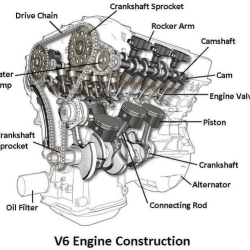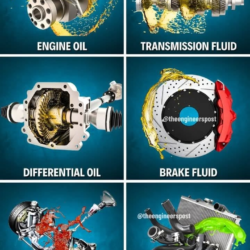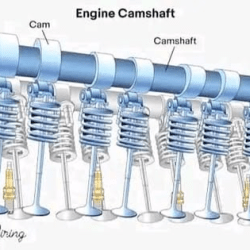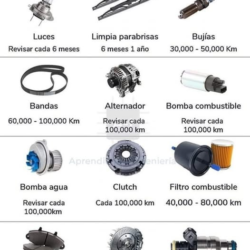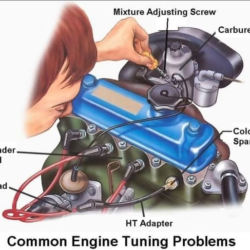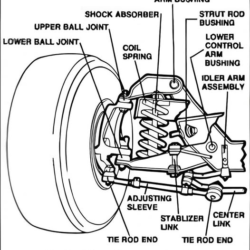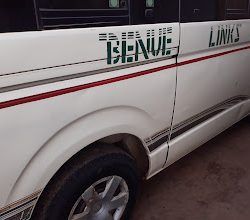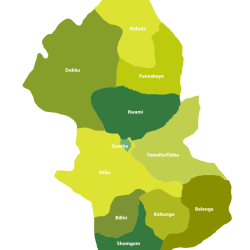The starter motor is an essential part of any vehicle’s ignition system, working to kick-start the engine by cranking it to initiate the combustion process. If you’ve ever dealt with a dead battery, you know that jump-starting can get you back on the road. However, it’s crucial to understand how the starter motor works, what’s involved in jump-starting, and the safety precautions necessary to avoid damaging your vehicle or risking personal injury.
1. Understanding the Starter Motor
The starter motor, a cylindrical component, plays a crucial role in your vehicle’s ignition system. Connected to the battery, it engages when you turn the key (or press the start button) to crank the engine.
- Windings and Terminals: Inside, the motor consists of windings that generate a magnetic field when electrified. The two terminals—positive and negative—are essential connection points during jump-starting.
2. The Role of the Starter Motor in Ignition
When you start your vehicle, the battery sends an electric current to the starter motor, which then engages the engine’s flywheel, enabling it to begin the combustion cycle. The starter motor only operates briefly, yet without it, your engine cannot start.
3. Jump-Starting Basics
When a battery dies, it lacks the power to crank the starter motor, preventing the engine from starting. A jump-start transfers power from a charged battery to the dead one, helping to start the car temporarily.
4. Essential Equipment for Jump-Starting
- Jumper Cables: Heavy-duty, insulated cables with clamps for safe terminal connections.
- A Working Battery: A fully charged battery in a nearby vehicle or a portable jump starter.

5. Step-by-Step Guide to Jump-Starting a Car
- Preparation: Make sure both cars are off and in Park or Neutral. Locate the positive (+) and negative (–) terminals on each battery.
- Connect the Positive Terminal: Attach the red cable to the positive terminal of the dead battery, then connect the other end to the positive terminal of the working battery.
- Connect the Negative Terminal: Attach the black cable to the negative terminal of the working battery. Connect the other end to an unpainted metal surface on the car with the dead battery (e.g., a metal bolt or bracket) rather than directly on the negative terminal, reducing the risk of sparks.
- Start the Cars: Start the car with the working battery first, then try to start the car with the dead battery.
- Disconnect the Cables in Reverse Order: Remove the cables in reverse order once the car starts, ensuring no cables touch.
6. Common Jump-Starting Mistakes to Avoid
- Incorrect Terminal Connection: Reversing connections (red to negative, black to positive) can damage the car’s electronics and cause sparks.
- Skipping Safety Checks: Not checking if the vehicles are in Park/Neutral or the parking brake is set can lead to rolling or accidents.
- Inadequate Cable Condition: Using old or frayed cables can pose a hazard.
7. Safety Tips for Jump-Starting
- Use Safety Goggles: Protects eyes from potential sparks.
- Avoid Touching Metal Parts: Prevents short circuits and electric shocks.
- Follow the Sequence: Always connect positive to positive and negative to negative.
- Ensure Proper Ventilation: Avoid jump-starting in enclosed spaces due to battery fumes.
8. When Jump-Starting Fails: Troubleshooting
If the jump-start fails, here’s what to check:
- Battery Charge: If the dead battery doesn’t hold a charge, it may need replacement.
- Starter Motor Condition: A faulty starter motor will prevent the engine from cranking even with a jump-start.
- Cable Connections: Ensure all connections are secure and free from corrosion.
9. Starter Motor Issues to Watch Out For
Common signs of a failing starter motor include:
- Clicking Sound: If you hear a clicking noise when trying to start, it may indicate a weak battery or a failing starter.
- Grinding Noise: This can suggest worn-out gears in the starter motor.
- No Response: If nothing happens when you turn the key, the starter motor may need replacement.
10. Battery Health and Maintenance
Maintaining your battery is crucial to avoid unexpected issues:
- Regular Testing: Test your battery’s charge regularly, especially before long trips.
- Clean Terminals: Remove corrosion with a baking soda and water solution.
- Avoid Frequent Short Trips: Short trips don’t allow the battery to recharge fully, which can shorten its lifespan.
11. Alternatives to Jump-Starting a Car
- Battery Chargers: Plug-in chargers can recharge your battery at home.
- Portable Jump Starters: Portable units allow for a jump-start without another vehicle.
- Push-Start for Manual Cars: In some manual cars, push-starting may work as an alternative if no charger or cables are available.
12. FAQs on Car Starter Motor and Jump-Starting
Q1: Can jump-starting damage my car?
A: If done correctly, jump-starting is safe. Incorrect terminal connections or improper cable removal can, however, damage the car’s electrical system.
Q2: How long should I drive after a jump-start?
A: Drive for at least 20 minutes to help recharge the battery. If the car struggles to start afterward, the battery may need replacement.
Q3: Can I jump-start a completely dead battery?
A: If a battery is severely discharged, jump-starting may not work. In this case, a full charge or replacement might be necessary.
Q4: Is it safe to jump-start a car in the rain?
A: Yes, as long as the cables and terminals are handled carefully to prevent exposure to water, which could cause shorts or electric shocks.
Q5: Why does my car die again after a jump-start?
A: If the car dies again, the battery likely isn’t holding a charge, or there may be an issue with the alternator or starter motor.
Q6: What’s the difference between a battery issue and a starter motor issue?
A: A dead or weak battery shows dim lights and slow crank. A failing starter motor often results in a clicking sound or no response when turning the key.
Important Reminder: Jump-starting should be a temporary fix. If your car battery dies frequently or the starter motor shows signs of failure, it’s wise to consult a mechanic for a thorough inspection and possible replacement.

